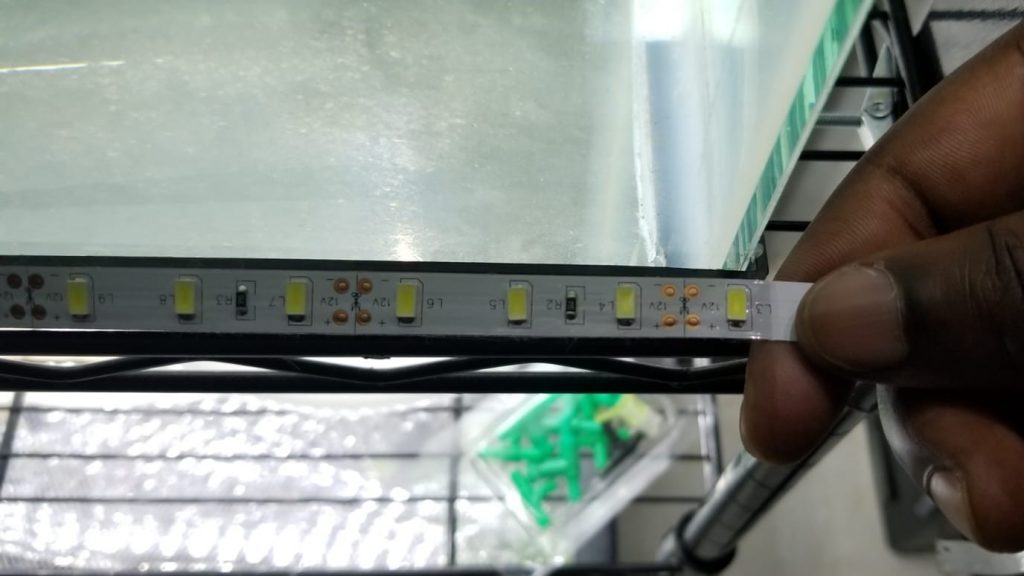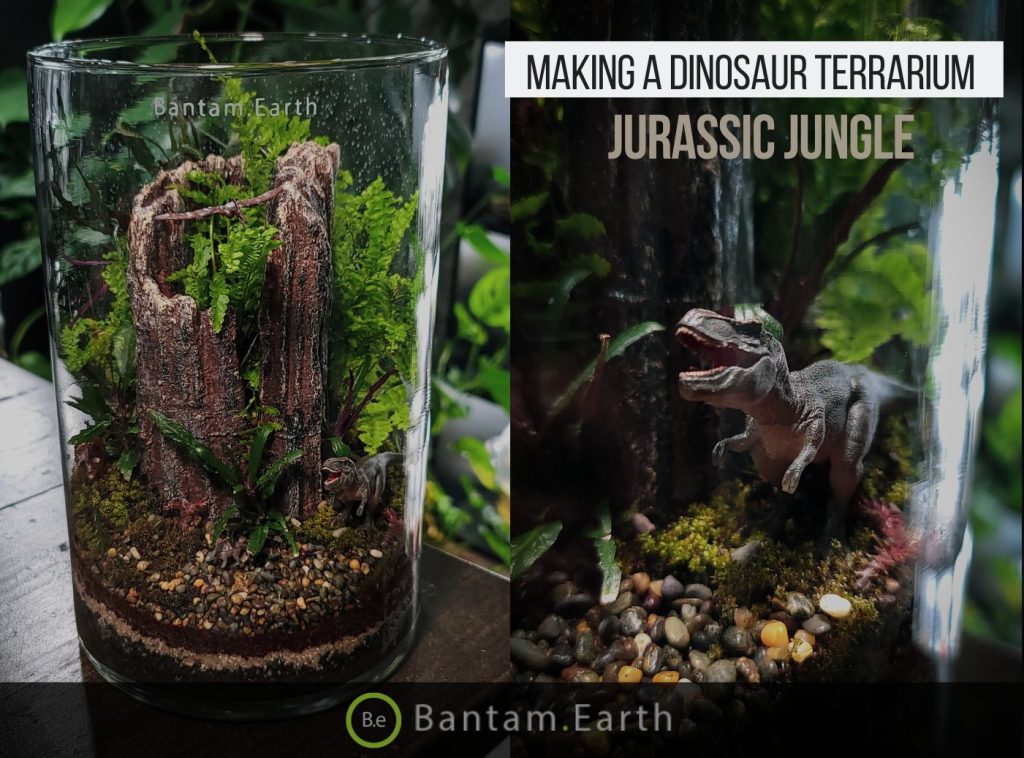In this day and age LED lighting is the only type of lighting you should be using in your planted aquarium tanks. In comparison to traditional lighting, LED’s are far cheaper and safer to use. They last much longer than fluorescent bulbs and use 80% less electricity.
LED lights are adjustable and come in just about any color the human eye can perceive!
What Are LED Lights?
LED is an abbreviation for Light Emitting Diode. Electricity passes through a tiny microchip illuminating a small surface and causing visible light to be seen.
Are LED Lights Good For Aquariums?
LED lights are great for aquariums for a number of reasons. The most beneficial reason being it doesn’t fluctuate the temperature of the tanks water. The fact that LEDs are adjustable makes them ideal for all aquarium types including saltwater reef tanks, as well as planted aquariums.


Terrariums can also benefit from LED lighting. Having UV lights along with LED’s allow my reptiles and plants to both thrive from the daylight simulated setup. At night, LED lights are easily adjusted to a very low wattage allowing my terraria to perfectly mimic moonlight.
Best Light Spectrum For Aquarium Plants
Plants use a combination of colors from the visible spectrum to promote photosynthesis. Photosynthesis is the process of using light as energy to digest carbon dioxide and minerals within the water. Plants naturally do this process with sunlight, but today we will try to mimic the process with artificial lighting… LEDs!
Something worth noting, green plants don’t use the color green on the visible spectrum. They actually reflect that color back out, which is why most plants are green! The colors we will most benefit from are Blue, red, and yellow!


To simplify the choice between what color LED strips you should use if you only wanted to buy one set of colors… I would recommend a “Cool Daylight”, which is about 6000 Kelvins. If you wanted to mix up the colors for optimal results, then pair one “Pure Blue” (10,000K) and “Pure Red” (1,000K) LED bulb with every twelve “Cool White” (4,000K) set of LED bulbs.
How Many LED Bulbs Are Best For A Planted Aquarium?
There really isn’t a one-set-fits-all answer for this if you decide to do a DIY setup. A lot of variables come into play on this. What type of plants do you plan on having in this tank… How deep is the water the LED’s will have to penetrate… How far away will the LED’s be from the surface of the water…


For the sake of simplicity in today’s tutorial, I would recommend the length of the Aquarium would be the length of the strip of LED’s. I would optimize the strength of the lighting by adding an additional row of LEDs for every ten inches deep the lights will have to penetrate. I have found through experience that this practice works best for most of the aquarium plants in my feeder tank set up.
**Don’t forget that one of the biggest advantages to using LED lighting is that they’re dimmable! So adding to much light via additional rows can easily be managed by adjusting the brightness later.
Making Homemade LED Lights For The Aquarium
There are a ton of different ways you can set up and customize your LED lighting. Today I will show you an extremely affordable way to install LED lights to your aquarium. It will be a good idea to make sure you keep all electrical parts of this install a good distance from water.


Materials:
- LED Strip Kit – Most kits you will find come with more LED’s than you will need, remote control and dimmable presets. https://amzn.to/2JT06o2
- Black Duck Tape – This will be used to create the outer surface of the light housing if you don’t stick the LEDs directly to the surface of a preexisting hood or lip. https://amzn.to/2AcuvhC
- Saran Wrap – We will use this to seal the LED bulbs surface from potential water damage later after install. https://amzn.to/2mJc7DC
- Sheet Of Cardboard – This will act as the structure for our LED housing. https://amzn.to/2LlNrQi
- 16-Gauge Speaker Wire – Any wire will do. Just make sure it is no thinner than 20 gauge and no thicker than 14 gauge. https://amzn.to/2LlNueW
- Adhesive liquid – Hot glue worked best for me but you can also use silicon (takes longer to dry) or super glue (make sure it’s non-toxic).
Tools:
- Soldering Iron – We will need to solder wires to LED strips once we cut the strips down to size. https://amzn.to/2mEVrwW
- Measuring Tape – To measure out LED strips and cardboard. https://amzn.to/2NMqmmC
- Wire cutters – Obviously to cut the wires… Scissors worked pretty well though. https://amzn.to/2LPHRBU
- Scissors – For cutting various things like cardboard and LED strip. https://amzn.to/2mIsOit
Constructing the LED Lights:
- First, we need to measure out the length of the tank and figure out how long the strips will need to be on the LEDs. cut two strips of lights long enough to reach both ends of the tank in length.


- Once the strips are cut, measure out the distance between where the LEDs will be placed and where the AC adapter will connect. that will be the length of speaker wire we will need to power the LED strips.
- Cut out two strips of cardboard to the matching length of the LED strips and allow half an inch of thickness on both sides of the LED strip.


- Next, we will sandwich the two pieces of cardboard around a “wire coat hanger” and wrap it with the black duck tape. The wire coat hanger is great for mounting the lighting over the tank and flexible enough to adjust.


- Apply LED’s to one side of the strip and solder wires accordingly to LED strips. Test connection to AC adapter verifying the LED’s work. and unplug if successful. If unsuccessful, check the connection and make sure plus and minus are correctly soldered.


- A nice & affordable way to seal the LED’s from moisture will be to cut a strip of plastic wrap out and glue it over the LEDs.


- Neatly wrap outer housing with one final layer of duck tape.
- Test connection once more and use the remote to adjust the brightness to satisfactory!


How Long Should Lights Be On In An Aquarium?
When it comes to how long the lights should be on in an aquarium, it depends mostly on if rather or not there will be living animals in the tank. Fish and most invertebrates need to experience some type of day and night simulation. It would be inhumane and cause serious stress if you kept the lights on for 24 hours a day. So if you plan on having animals inhabit your aquarium, I’d recommend running the daylight simulation for a maximum of 16 hours per day.
Planted VS Non-planted
Plants, on the other hand, thrive on lights. Running the lights at their peak should be no less than at least 4 to 6 hours a day. Any less and living plants will find it difficult to digest the nutrients needed to survive. I find a duration of about 10 to 12 hours a day ideal for the plants in my aquariums and vivarium.


For lighting in a non-planted aquarium, the fish are my only concern and a duration of about 8 to 10 hours works best for them.
Keep in mind, consistency is also a very important factor for all aquatic and terrestrial life. Having a simple outlet timer allows me to mindlessly turn on and off the lights every single day. Being late with the lighting schedule just once or twice will affect the growth and stress of both the plants and the fish!
Final Thoughts
Setting up LED lighting not only worked out best for my aquatic and terrestrial inhabitants but the finished look the aquarium presents, with good lighting, came out amazing! I never have to worry about heating issues and being able to control my lights with a remote is something I love showing off to company… haha!! What other types of setups have you applied to LED lighting too? Did you do anything unique as far as colors or features?





